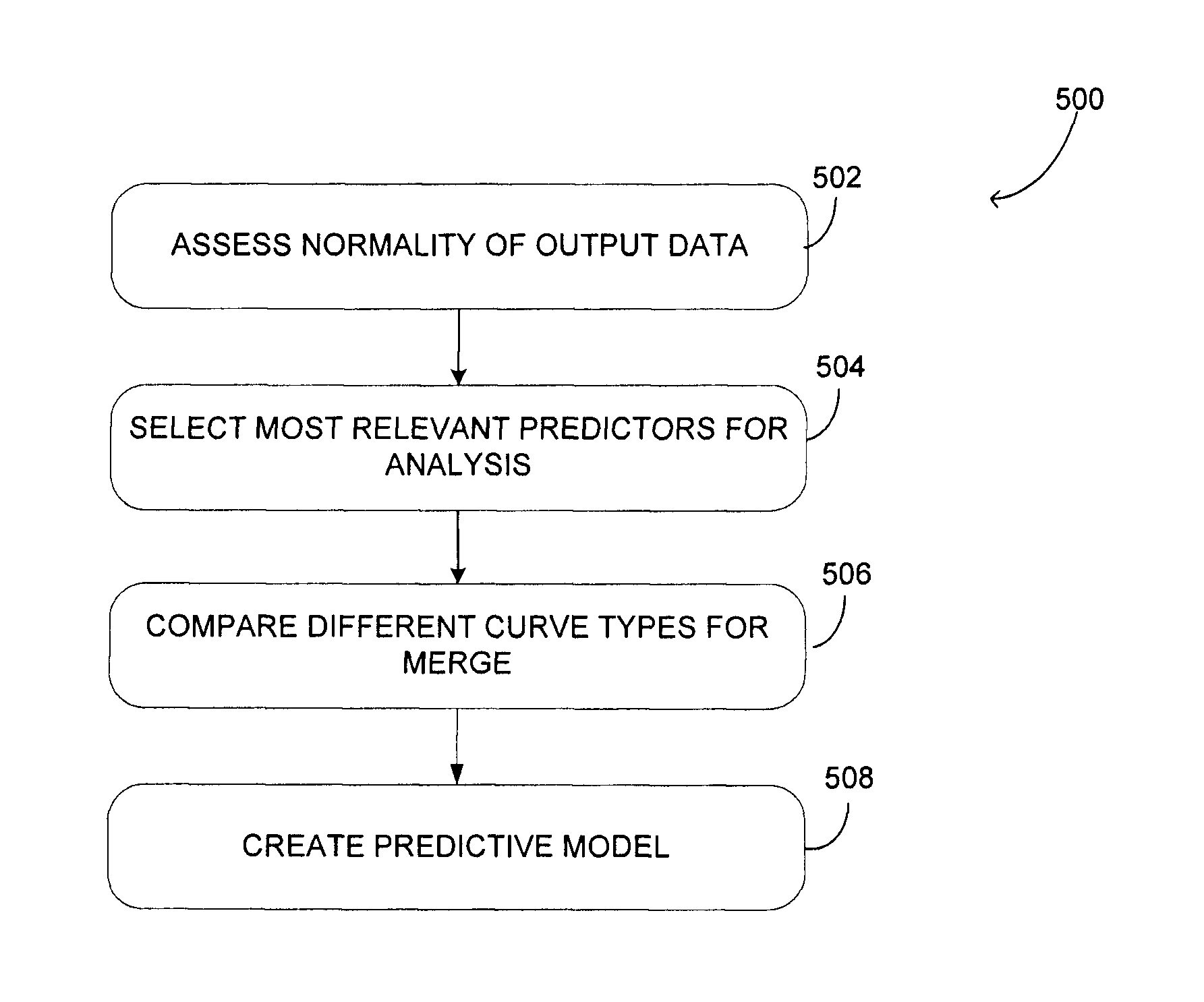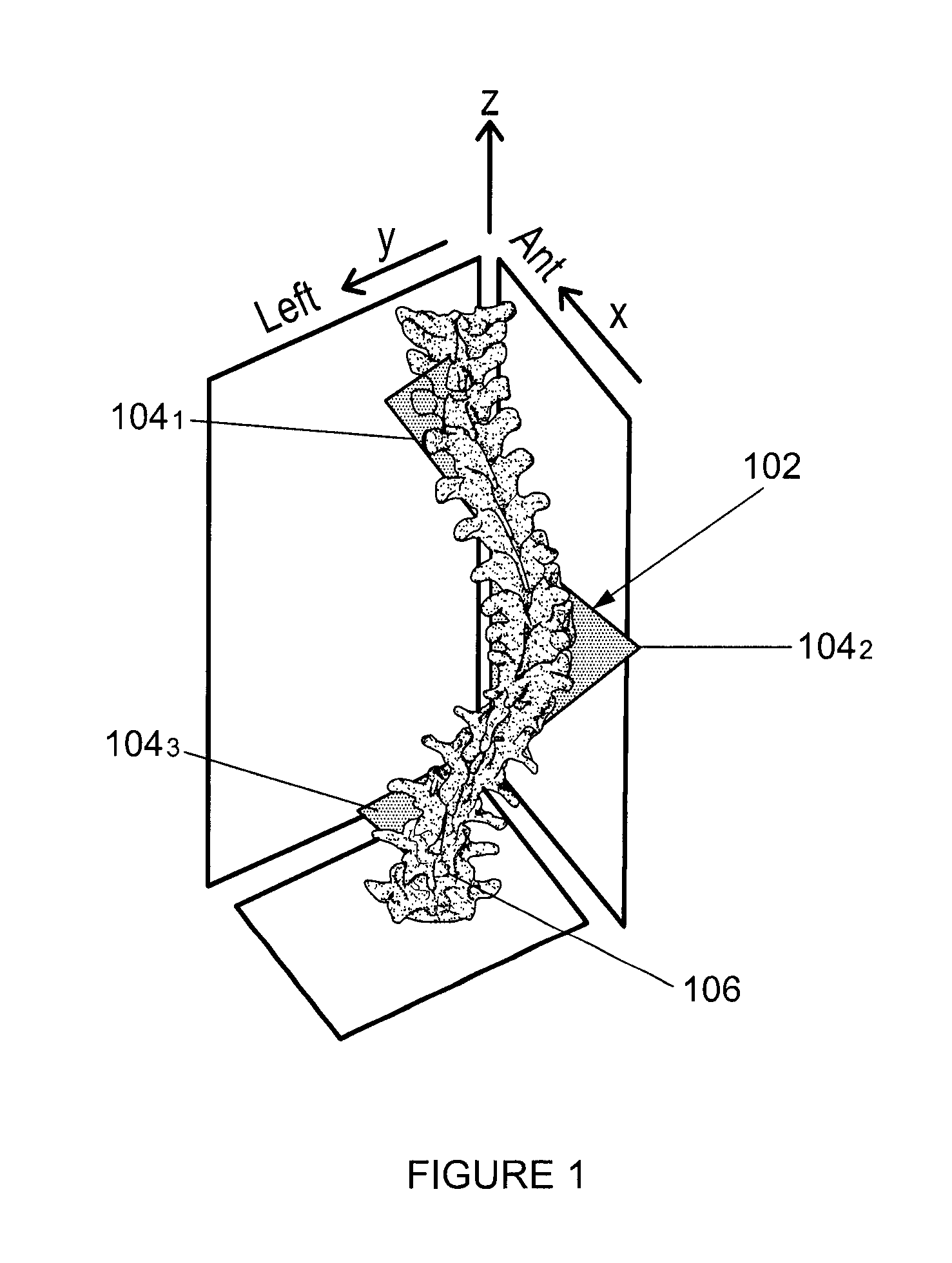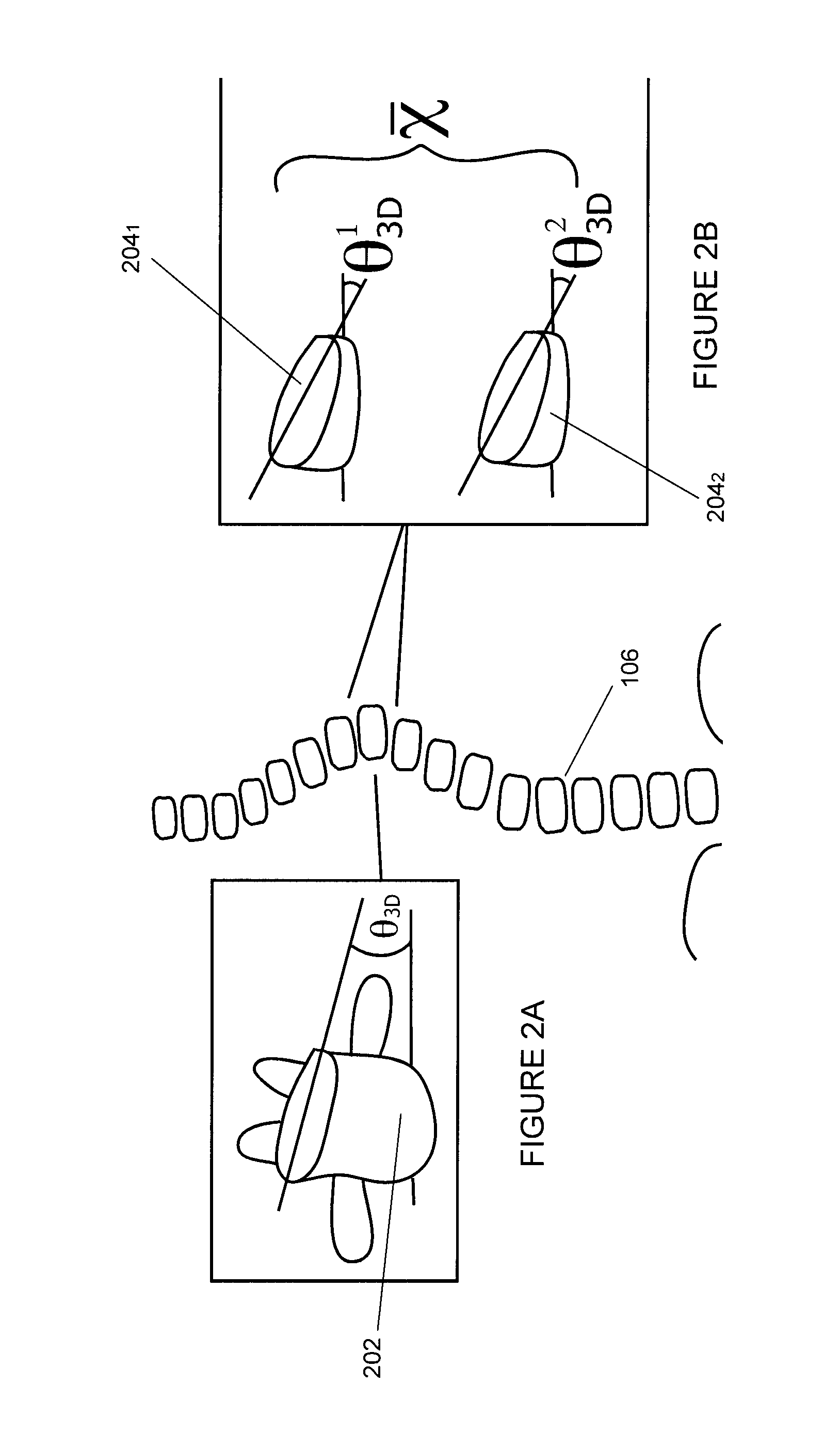System and method for predicting scoliosis progression
- Summary
- Abstract
- Description
- Claims
- Application Information
AI Technical Summary
Benefits of technology
Problems solved by technology
Method used
Image
Examples
Embodiment Construction
[0050]There is described a method and system for predicting final Cobb angle in idiopathic scoliosis based on information available at a first visit. In one embodiment, the method and system apply to AIS, as described herein. It should however be understood that other types of scoliosis, such as early onset idiopathic scoliosis, may also apply. A plane of maximal curvature is provided as a risk factor of progression. One or more of the following predictive factors are combined in order to obtain the predictive model: type of curvature, skeletal maturity, initial Cobb angle, angle of plane of maximal curvature, 3D wedging of junctional and peri-apical disks (e.g. T3-T4, T8-T9, T11-T12 disks) and sum of thoracic and lumbar 3D disks wedging.
[0051]Classical risk factors such as skeletal maturity, initial Cobb angle and type of curvature are found to predict final Cobb angle to a certain extent. The addition of the plane of maximal curvature as well as the sum of the disk wedging of the ...
PUM
 Login to View More
Login to View More Abstract
Description
Claims
Application Information
 Login to View More
Login to View More - R&D
- Intellectual Property
- Life Sciences
- Materials
- Tech Scout
- Unparalleled Data Quality
- Higher Quality Content
- 60% Fewer Hallucinations
Browse by: Latest US Patents, China's latest patents, Technical Efficacy Thesaurus, Application Domain, Technology Topic, Popular Technical Reports.
© 2025 PatSnap. All rights reserved.Legal|Privacy policy|Modern Slavery Act Transparency Statement|Sitemap|About US| Contact US: help@patsnap.com



